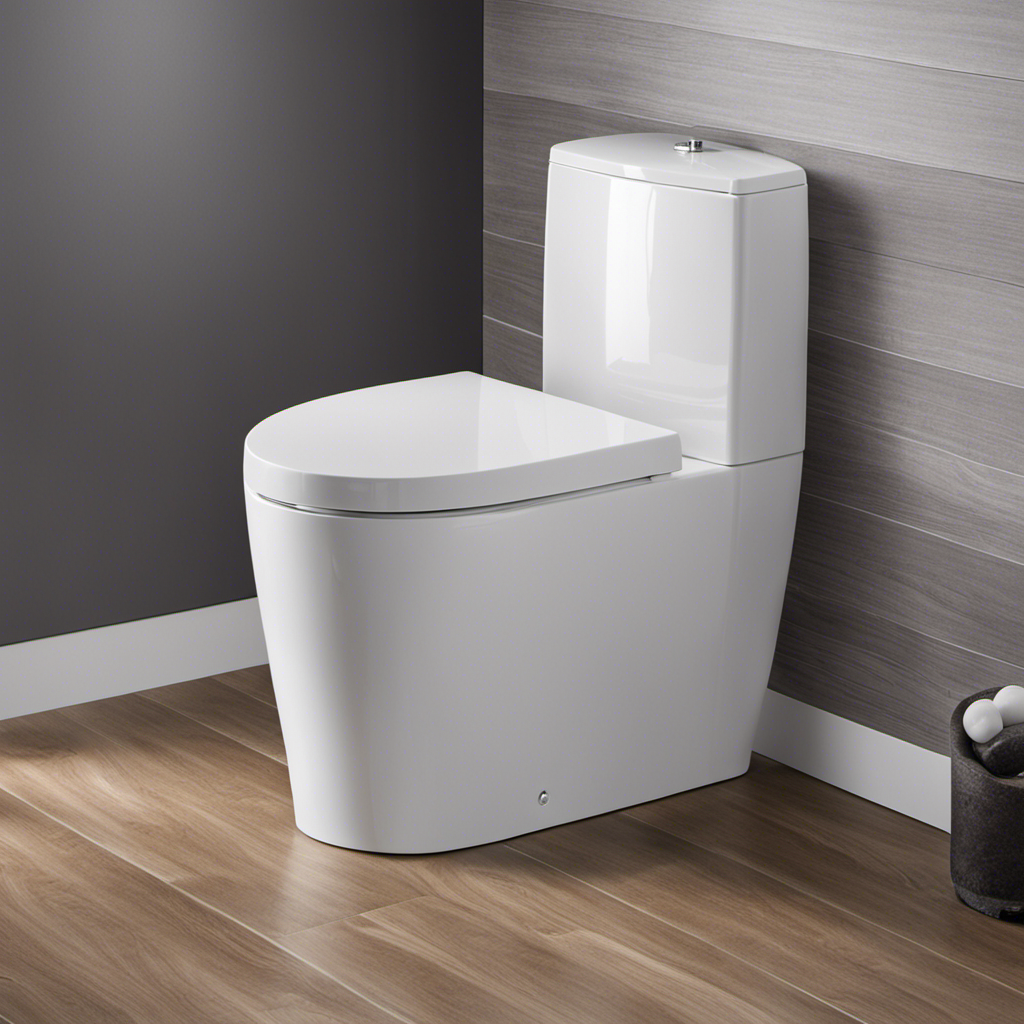Hey there, did you know that toilet shutoff valve issues can be a major headache? Well, fear not! In this easy water shutoff guide, I’ll walk you through troubleshooting common problems like stuck valves, leaks, and difficult handles.
We’ll start by learning how to turn off the water supply line to your toilet, either at the rear of the toilet or at the main water supply.
Then, I’ll show you how to fix a leaking valve and offer some additional tips for troubleshooting.
Let’s get started and say goodbye to those pesky toilet shutoff valve problems!
Key Takeaways
- Stuck valve: Spray with lubricant and let it rest before trying again
- Valve partially closing: May need to purchase a new valve
- Valve leaking: Tighten fitting or replace seal, or replace valve if necessary
- Valve not shutting off completely: Consider buying a new valve
Common Issues With Toilet Shutoff Valves
I’ve had a few common issues with toilet shutoff valves. One issue is when the valve gets stuck. In this case, I usually spray it with lubricant and let it rest before trying again.
Another problem I’ve encountered is when the valve only partially closes. This usually means that I need to purchase a new valve.
When the valve starts leaking, my first step is to try tightening the fitting or replacing the seal. If that doesn’t work, I have to replace the valve altogether.
Sometimes, the valve doesn’t shut off completely. In these cases, it’s best to consider buying a new valve.
Lastly, if the valve handle is difficult to turn, I either apply lubricant to loosen it up or replace the valve entirely.
Turning off the Water Supply Line to the Toilet
To turn off the water supply line to the toilet, locate the shutoff valve at the rear of the toilet and rotate it clockwise. This is an important step in toilet shutoff valve maintenance and troubleshooting toilet shutoff valve problems. By shutting off the water supply, you can prevent any leaks or further damage.
Here is a table highlighting some common issues with toilet shutoff valves:
| Issue | Solution |
|---|---|
| Stuck Valve | Spray with lubricant |
| Valve Partially Closing | Purchase a new valve |
| Valve Leaking | Tighten fitting or replace seal |
| Valve Not Shutting Off Completely | Consider buying a new valve |
| Difficult Handle | Apply lubricant or replace valve |
Turning off the Main Shutoff Valve
Locating the main shutoff valve in the basement or outside the home is a crucial step in ensuring the water supply is completely turned off. Regular maintenance for main shutoff valves is important to prevent any issues with turning the valve.
If the main shutoff valve is difficult to turn, there are a few steps you can take. First, try applying lubricant to the valve and give it some time to work. If that doesn’t help, you may need to replace the valve altogether.
It’s important to address any issues with the main shutoff valve promptly to avoid potential water damage. By following these steps and performing regular maintenance, you can ensure that your main shutoff valve is in proper working condition.
Fixing a Leaking Valve
When a valve is leaking, tightening or replacing the packing nut can often solve the problem.
To begin, locate the packing nut on the valve, which is usually located just below the handle. Using a wrench, turn the nut clockwise to tighten it. This should create a better seal and stop the leak.
If tightening the nut doesn’t work, you may need to replace the valve seals. To do this, turn off the water supply and remove the packing nut. Take out the old seals and replace them with new ones.
Make sure to lubricate the valve handles to ensure smooth operation. Apply a small amount of lubricant to the handles and work it in by turning the handles back and forth. This will help prevent them from becoming difficult to turn in the future.
Additional Tips for Troubleshooting Toilet Shutoff Valve Issues
I found some additional tips that might help me troubleshoot any problems I’m having with my toilet’s shutoff valve.
If the valve is stuck, I can try spraying it with a lubricant and letting it rest before attempting to turn it again. When it comes to lubricant options, I can use WD-40 or a silicone-based lubricant.
If the valve needs to be disassembled and cleaned, here are the steps I can follow:
- First, I need to shut off the water supply to the toilet by turning the valve clockwise.
- Then, I can use a screwdriver and slip-joint pliers to loosen the packing nut and remove the valve handle.
- Next, I can disassemble the valve, clean the washers, and reassemble it.
Frequently Asked Questions
How Do I Know if My Toilet Shutoff Valve Needs to Be Replaced?
If my toilet shutoff valve needs to be replaced, there are signs to look out for, such as leaks or difficulty turning the handle. Troubleshooting steps include tightening fittings, replacing seals, or purchasing a new valve.
Is It Possible to Repair a Stuck Toilet Shutoff Valve Without Replacing It?
Yes, it is possible to repair a stuck toilet shutoff valve without replacing it. You can try spraying it with lubricant, letting it rest, and then trying again. If that doesn’t work, you may need to purchase a new valve.
Can I Use Any Type of Lubricant to Fix a Difficult-To-Turn Valve Handle?
Yes, you can use WD-40 or silicone spray as a lubricant to fix a difficult-to-turn valve handle. Apply the lubricant to the handle and let it sit for a few minutes before trying again.
What Should I Do if I Can’t Locate the Shutoff Valve at the Rear of the Toilet?
If I can’t locate the shutoff valve at the rear of the toilet, I would try looking for the main shutoff valve in the basement or outside the house. If I still can’t find it, I might need to seek professional assistance for alternative solutions.
How Often Should I Check and Tighten the Packing Nut on the Valve to Prevent Leaks?
I check and tighten the packing nut on the valve to prevent leaks as often as needed. It’s important to regularly inspect and maintain the valve to ensure it forms a proper seal and avoids any potential leaks.
Conclusion
Well folks, we’ve reached the end of our troubleshooting journey with toilet shutoff valves.
I hope you’ve enjoyed this rollercoaster ride of water supply drama. From stuck valves to leaky nightmares, we’ve covered it all.
Remember, when all else fails, just turn off the water supply line by rotating that pesky valve clockwise. And if that’s not enough, venture down to your basement or outside to find the main shutoff valve.
Tighten that packing nut, check for leaks, and if all else fails, buy yourself a shiny new valve.
Happy troubleshooting, my friends!










